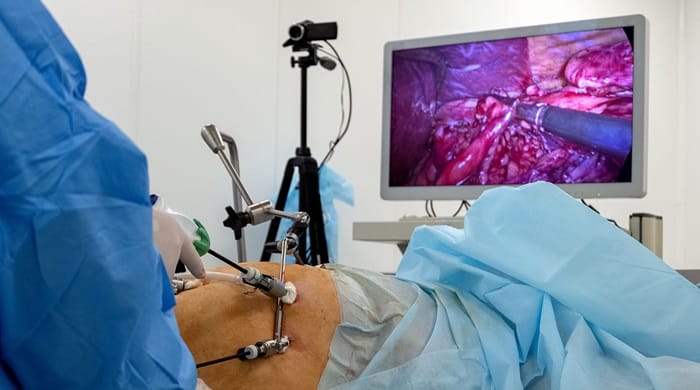Laparoscopic gynecological procedures have significantly transformed the healthcare landscape for women. A lot of surgeries performed with more expansive incisions in the abdominal area are presently done through laparoscopic gynecological procedures. It is safer and more effective and a substitute for open surgery. Although a laparoscope resembles a hysteroscopy, it is used for the treatment and diagnosing of gynecologic problems. It is inserted into the abdominal and pelvic cavities.
A lot of women are choosing laparoscopic surgery in Jaipur since it is minimally intrusive and an innovative procedure. Here are the top ten benefits of laparoscopic gynecological procedures suggested by Dr. Pankhuri Gautam, the expert obstetrician and best gynecologist in Jaipur, which is discussed in this post to let you know why you can’t ignore them.
Top Benefits Of Laparoscopic Gynecological Procedures
Laparoscopy is a useful tool used in laparoscopic procedures for treating and diagnosing ovarian cysts, endometriosis, fibroid tumors, infertility, and severe pelvic pain. Laparoscopic gynecological procedures have many benefits since they assist patients in avoiding large incisions, blood loss, pain, wound infection, huge expense, prolonged hospital duration, and many more benefits.
Let us check how beneficial the gynecological procedures through the information provided here are:
1. Incisions Are Smaller
The incisions made in Laparoscopic gynecological procedures, making it beneficial for patients. The doctor performing the surgery performs a minimally invasive technique called a laparoscopy to check for issues in the pelvic area or the stomach.
These procedures are quicker, safer, and less intrusive since this innovative surgical technique is carried out through tiny abdominal incisions. The instrument used in this surgery, a laparoscope, is a lighted and slender video camera. Smaller incisions are possible due to this instrument, allowing the surgeon to view the patient’s body through a video monitor without making major incisions.
2. Complications Are At Lower Risk
Laparoscopic procedures outperform many gynecological procedures since it minimizes post-operative pain and complications. The techniques used in these procedures significantly contribute to reducing complications risk. The use of small incisions makes laparoscopic gynecological treatments less problematic.
Small incisions are made with this technique, minimizing bleeding and injury to the body. It reduces the likelihood of problems and speeds up patient recovery. Precision surgery helps prevent errors and ensures patient safety by using specialized instruments and a tiny camera. Reduced pain and scars following surgery are further benefits of the small incisions.
3. Recovery Is Faster
Laparoscopic procedures are the advocated alternative since they allow patients to return to normal activities with minimal disruption. Patients can resume their regular activities in about two weeks after quickly healing from the surgery. There are fewer scars and incisions are smaller, the patient recovers more quickly since the surgeon has greater control and visibility throughout the laparoscopic procedure.
Patients recover quickly after surgery since the incision has less of an influence on the surrounding tissues. Patients can resume their regular activities and work more quickly due to the reduced physical disturbance, which speeds up the healing process, making them gain from this swift return to routine in terms of the economy.
4. Reduced Risk Of Hemorrhage
Devices used in laparoscopic gynecological procedures are sophisticated. They have a lower risk of tissue damage and blood loss. Laparoscopic gynecological procedures are the first choice for surgeons and patients looking for more efficient and secure surgical solutions since the major benefit is that they result in less blood loss.
Since these procedures are minimally invasive methods, blood loss is reduced. Excessive bleeding is minimized by making small incisions and treating tissues carefully. It reduces the risk of hemorrhage and blood transfusions requirement, making the surgery safer.
5. Hospital Stay Duration Is Less
Hospital stay duration is less in laparoscopic gynecological procedures as compared to traditional procedures. Patients undergoing laparoscopic procedures are often discharged from the hospital on the same day of the surgical procedure since this technique is minimally invasive. Since patients experience less pain during the surgical procedure, hospitalization is not required for extended duration. One or two-night hospital stay may only be required after laparoscopic surgery.
6. Trauma To The Abdominal Wall Is Less
Although no procedure completely eliminates the challenges of laparoscopic entry, the laparoscopic procedure reduces the trauma to the abdominal wall. The open entry approach in laparoscopic procedures is linked to a significant decrease in unsuccessful entrance attempts. Although many techniques are introduced to reduce the trauma to the abdominal wall, the open entry approach greatly decreases unsuccessful entrance attempts.
The surgeons access the surgery site through tiny incisions, often less than an inch long. These procedures are generally safer and more pleasant for patients with less strain on the abdominal wall and quick recovery since the microscopic wounds disappear and heal more quickly. Reduced likelihood of less pain and hernias result from less harm done to tissues and muscles.
7. Less Time In Hospital Means Less Expense
Since hospital stays are for less duration in laparoscopic gynecological procedures, expenses of longer stay are saved. Patients can significantly save expenses due to shorter hospital stays. Since they heal faster, the hospital facility often discharges them in one or two days. Their medical bills are also lower since their use of medicinal resources is lower.
Patients also report higher satisfaction levels and lower costs because their hospital stays are shorter. Recovering more quickly also enables patients to resume their regular lives and jobs sooner, which saves money.
8. Risk Of Wound Infection Is Less
Laparoscopic gynecological procedures are less problematic, reducing bleeding, scarring, and infection risk. High-quality and sterilised surgery-specific instruments can contribute to a safer and more hygienic operating environment. The smaller cuts made during the surgical procedure are far less likely to come into contact with bacteria and germs and heal quickly.
These procedures are a safer option than standard open operations for healthcare providers and patients because they prevent issues associated with infections. Patients significantly and effectively benefit from improved outcomes since decreasing infection risk necessitates less antibiotics.
9. Improved Diagnostic Accuracy
Doctors employ specialized instruments to view and operate precisely, significantly improving diagnostic accuracy easily. A tiny camera allows them to see into organs clearly, which improves diagnostic accuracy. This valuable tool in women’s healthcare, laparoscopy, offers more accurate diagnosis, which leads to more successful treatments due to its sophisticated technology.
Doctors can also address problems during surgery, reducing the need for additional procedures. The detailed image helps the medical professional detect ovarian cysts, endometriosis, fibroids, and other issues. Improved therapy results and options are directly correlated with improved diagnosis.
Conclusion
Laparoscopic gynecological procedures have demonstrated superior patient outcomes compared to traditional laparoscopic surgery for treating endometriosis and fibroids. You cannot ignore the benefits of opting for these minimally invasive procedures. Medical professionals can view the internal organs with these minimally invasive procedures. Patients can experience improved health sooner due to the accelerated healing and recovery processes.
Patients experience minimal incisions, less blood loss, faster healing, savings of expense, and a shorter stay in the hospital after the surgical procedure. The precision instruments used in laparoscopic surgical procedures make accurate diagnosis and treatment possible. A lower chance of infections and problems means safer procedures and easier recovery times.
Dr Pankhuri Gautam suggests that these surgical procedures are the ideal alternative to comfortable, successful, and quick treatment. Shorter hospital stays improve patients’ wellness since they can resume their regular activities more quickly.






